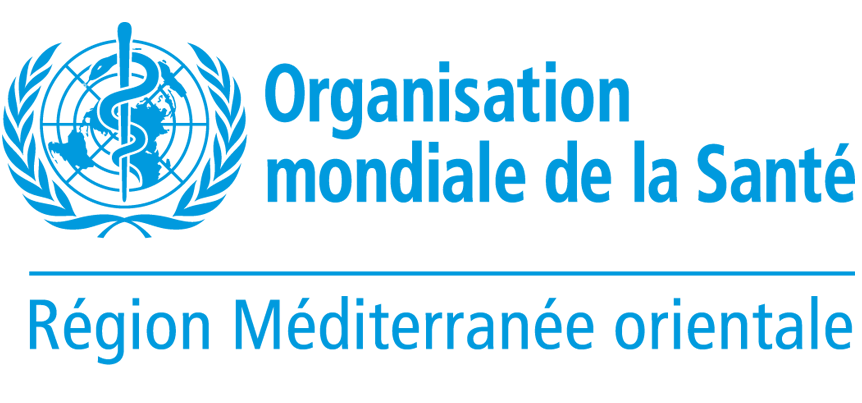Patients transferred, critical supplies denied as high-risk, on WHO-led joint mission in northern Gaza amid intense hostilities
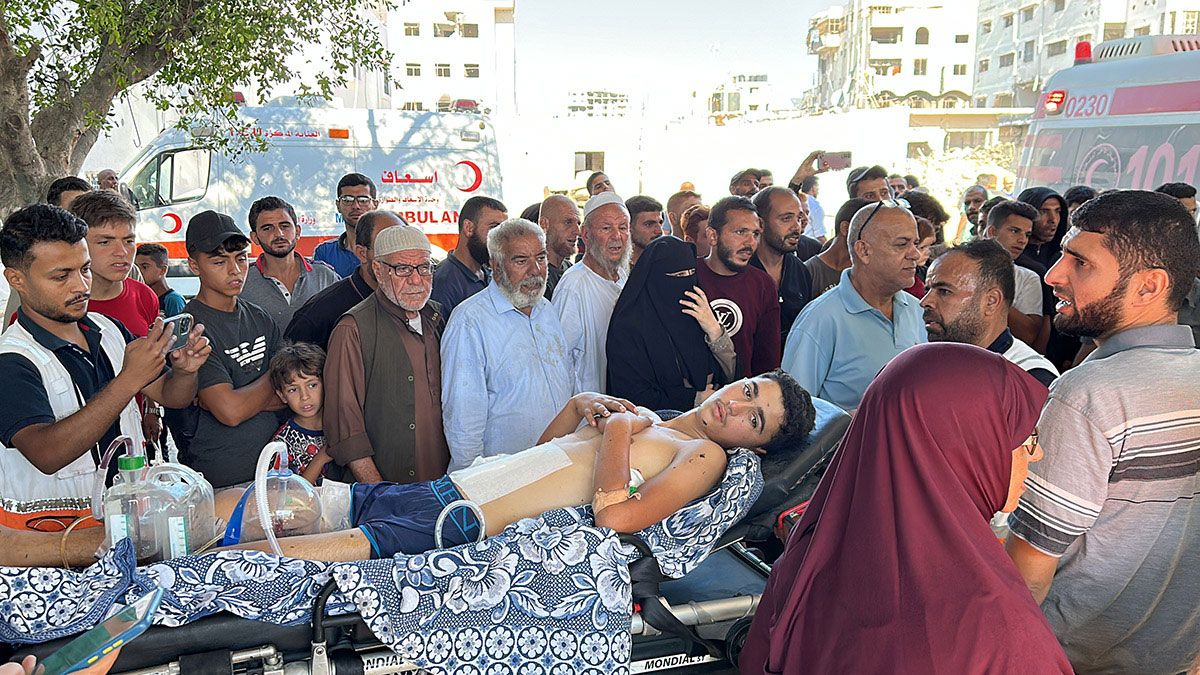
22 October 2024, Gaza, Cairo, Geneva – On 21 October, 14 patients and 10 caregivers were transferred from Kamal Adwan in North Gaza to Al-Shifa Hospital in Gaza City during a high-risk, WHO-led joint mission, amid intense hostilities and access restrictions. Despite an initial agreement, the delivery of critical medical supplies, blood, and fuel—resources essential for keeping Kamal Adwan and Al-Awda hospitals operational – was denied just a few hours before the mission began on 20 October.
The mission lasted two days, with the team facing delays at successive checkpoints, and during extensive security screenings. The team was forced to stay overnight at Kamal Adwan Hospital, as they were not cleared to proceed to Al-Shifa hospital due to active conflict in the area. Heavy bombardment continued near the hospital throughout the night, causing distress among patients, health workers and the mission team. The team was only able to proceed to Al-Shifa Hospital around midday on 21 October. En route to Al-Shifa, all patients were taken out of the ambulances for a security screening. Some patients on stretchers were left lying on the ground for some time during the screening was conducted, while some partner staff were subjected to humiliating treatment.
This was the fourth WHO mission to the north of Gaza since 1 October. So far this month, out of the 21 missions requested by WHO, only 6 were facilitated, the majority being denied or impeded.
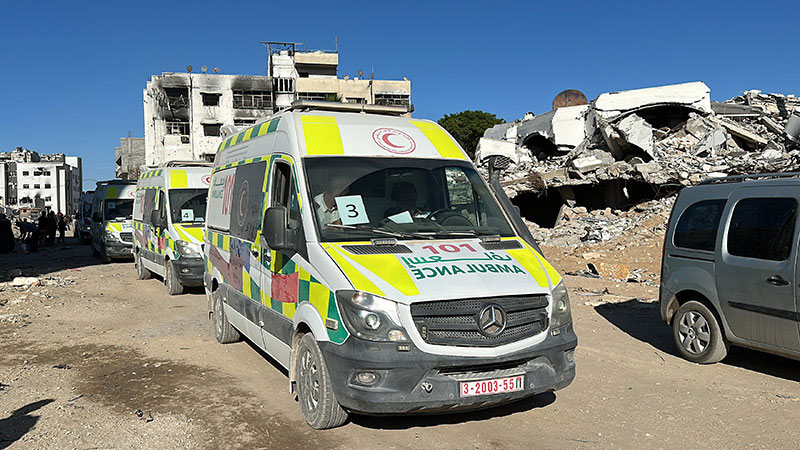 Kamal Adwan Hospital remains partially functional but is struggling to meet growing needs due to intensified hostilities in the north and a shortage of medical supplies and fuel. A strike near the hospital causing damages to the gate was reported earlier today, 22 October. Currently, there are 95 patients in the hospital, including 15 in intensive care (including four requiring continuous life support) seven of whom are children. Over the last two days, at least 200 severely injured people and 53 dead bodies have been brought to the already overwhelmed hospital. Damaged roads, combined with ongoing hostilities, are severely disrupting safe access to the hospital. If patients, ambulances, and health workers are unable to reach the facility, and partners cannot resupply it, the hospital may soon become non-functional.
Kamal Adwan Hospital remains partially functional but is struggling to meet growing needs due to intensified hostilities in the north and a shortage of medical supplies and fuel. A strike near the hospital causing damages to the gate was reported earlier today, 22 October. Currently, there are 95 patients in the hospital, including 15 in intensive care (including four requiring continuous life support) seven of whom are children. Over the last two days, at least 200 severely injured people and 53 dead bodies have been brought to the already overwhelmed hospital. Damaged roads, combined with ongoing hostilities, are severely disrupting safe access to the hospital. If patients, ambulances, and health workers are unable to reach the facility, and partners cannot resupply it, the hospital may soon become non-functional.
As hostilities intensify in North Gaza, WHO is deeply concerned about the last two functional hospitals – Kamal Adwan and Al-Awda – which must be protected. A complete lack of health care in North Gaza would make an already catastrophic situation worse, and lead to more lives being lost.
One year on, health care continues to be attacked and deprived of supplies and fuel, while WHO’s ability to regularly reach health facilities is severely compromised due to mission delays and denials.
WHO reiterates its call for unimpeded access to health facilities, reliable and timely facilitation of missions, sustained flow of aid into and across Gaza, protection of health care, and above all a ceasefire.
Intense bombardments, mass displacements and lack of access in northern Gaza force the postponement of polio vaccination campaign
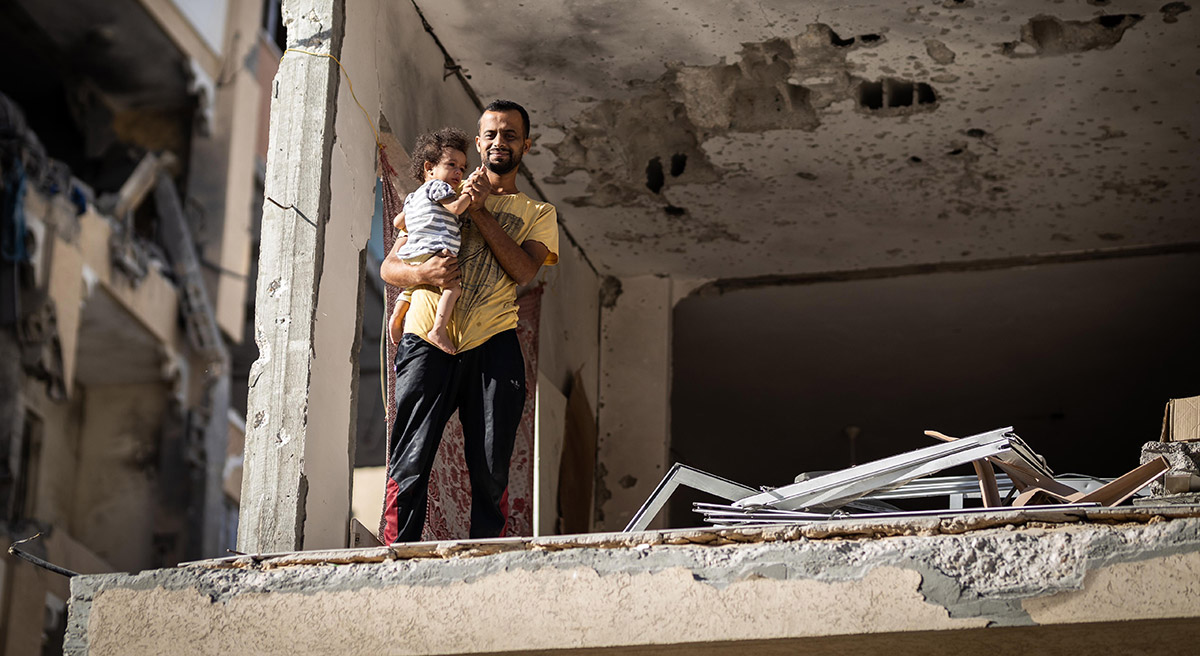
23 October 2024, Jerusalem/Amman/Geneva- Due to the escalating violence, intense bombardment, mass displacement orders, and lack of assured humanitarian pauses across most of northern Gaza, the Polio Technical Committee for Gaza, including the Palestinian Ministry of Health, World Health Organization (WHO), United Nations Children’s Fund (UNICEF), the United Nations Relief and Works Agency for Palestine Refugees (UNRWA) and partners have been compelled to postpone the third phase of the polio vaccination campaign, which was set to begin today. This final phase of the ongoing campaign aimed to vaccinate 119 279 children across northern Gaza.
The current conditions, including ongoing attacks on civilian infrastructure continue to jeopardize people’s safety and movement in northern Gaza, making it impossible for families to safely bring their children for vaccination, and health workers to operate.
All logistics, supplies and trained human resources were prepared to vaccinate children across northern Gaza with a second dose of novel oral polio vaccine type 2 (nOPV2), following a first round conducted across the Gaza Strip from 1-12 September 2024. However, given that the area currently approved for temporary humanitarian pauses was substantially reduced—now limited only to Gaza City, a significant decrease from the first round—many children in northern Gaza would have missed out on the polio vaccine dose.
To interrupt poliovirus transmission, at least 90% of all children in every community and neighborhood must be vaccinated – a prerequisite for an effective campaign to interrupt the outbreak and prevent its further spread. Humanitarian pauses are essential for its success, allowing partners to deliver vaccination supplies to health facilities, families to safely access vaccination sites, and mobile teams of health workers to reach children in their communities. A delay in administering a second dose of nOPV2 within six weeks reduces the impact of two closely spaced rounds on concurrently boosting the immunity of all children and interrupting poliovirus transmission. Having a significant number of children miss out on their second vaccine dose will seriously jeopardize efforts to stop the transmission of poliovirus in Gaza. This could also lead to further spread of poliovirus in the Gaza Strip and neighboring countries, with the risk of more children being paralyzed.
Since the rollout of the second round of the polio campaign in Gaza on 14 October 2024, 442 855 children under ten years have been successfully vaccinated in central and south of the Gaza Strip– 94% of the target in these areas. A total of 357 802 children between two to ten years received vitamin A supplements as part of efforts to integrate the delivery of polio vaccine with other essential health services in Gaza.
It is imperative to stop the polio outbreak as soon as possible, before more children are paralyzed and poliovirus spreads further. It is crucial therefore that the vaccination campaign in northern Gaza is facilitated through the implementation of the humanitarian pauses, ensuring access for wherever eligible children are located. WHO and UNICEF urge all parties to ensure that civilians, health workers, and civilian infrastructure, such as schools, shelters, hospitals, are protected and renew their call for an immediate ceasefire.
Polio vaccination campaign to resume in northern Gaza
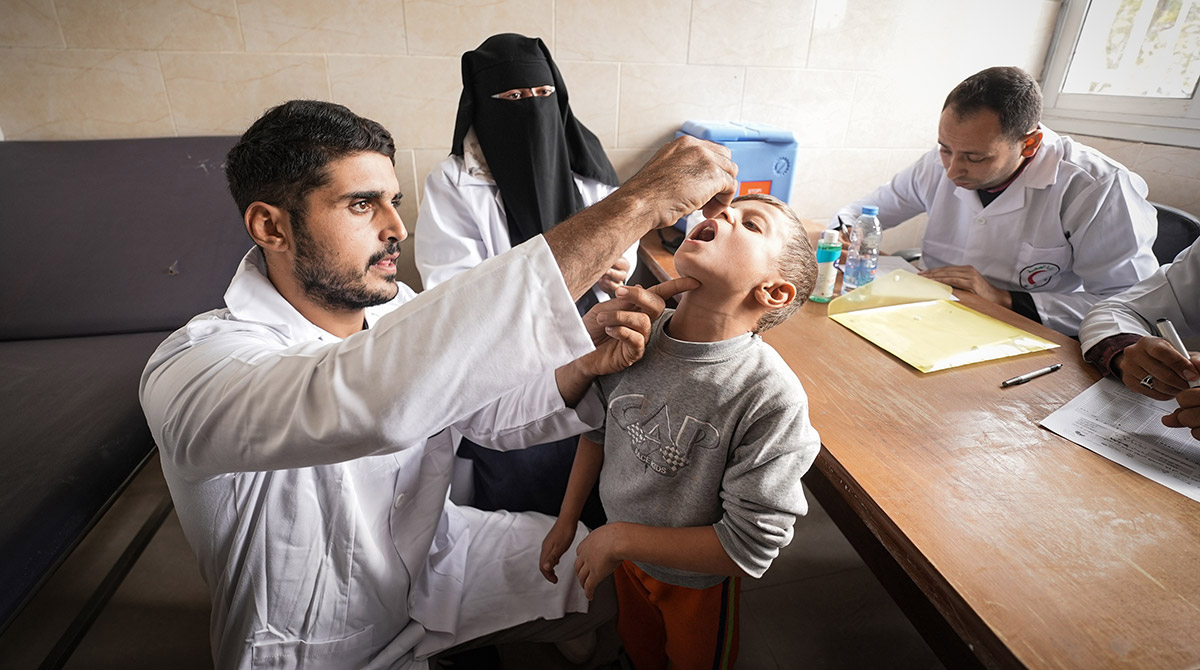
Joint statement by WHO and UNICEF
1 November 2024, A third phase of the polio vaccination campaign is set to begin tomorrow in part of the northern Gaza Strip after being postponed from 23 October 2024 due to lack of access and assured, comprehensive humanitarian pauses, intense bombardment, and mass evacuation orders. These conditions made it impossible for families to safely bring their children for vaccination and to organize campaign activities.
The humanitarian pause necessary to conduct the campaign has been assured; however, the area of the pause has been substantially reduced compared to the first round of vaccination in northern Gaza, conducted in September 2024. It is now limited to just Gaza City. Though in the past few weeks, at least 100 000 people have been forced to evacuate from North Gaza towards Gaza City for safety, around 15 000 children under ten years in towns in North Gaza like Jabalia, Beit Lahiya and Beit Hanoun still remain inaccessible and will be missed during the campaign, compromising its effectiveness. To interrupt poliovirus transmission, at least 90% of all children in every community and neighborhood must be vaccinated. This will be challenging to achieve given the situation.
The final phase of the campaign had aimed to reach an estimated 119 000 children under ten years old in northern Gaza with a second dose of novel oral polio vaccine type 2 (nOPV2). However, achieving this target is now unlikely due to access constraints.
Despite the lack of access to all eligible children in northern Gaza, the Polio Technical Committee for Gaza, including the Palestinian Ministry of Health, World Health Organization (WHO), United Nations Children’s Fund (UNICEF), United Nations Relief and Works Agency for Palestine Refugees (UNRWA) and partners has taken the decision to resume the campaign. This aims to mitigate the risk of a long delay in reaching as many children as possible with polio vaccine and the opportunity to vaccinate those recently evacuated to Gaza City from other parts of North Gaza.
To overcome challenges posed by the volatile security situation and constant population movement, robust micro plans have been developed to ensure the campaign is responsive to the significant population shifts and displacement in the north, following the first round in September. The campaign will be delivered by 216 teams across 106 fixed sites, 22 of which have been added to ensure increased availability of vaccination in areas where recently displaced people are seeking refuge. Two hundred and nine social mobilizers will be deployed to engage communities and raise awareness around vaccination efforts. The time period for the humanitarian pause has been extended by two hours and is expected to run from 6am to 4pm daily. As in the first two phases, vitamin A will also be co-administered to children between two to ten years in the north to help boost overall immunity.
The campaign in northern Gaza follows the successful implementation of the first two phases of the second round in central and southern Gaza, which reached 451 216 children – 96% of the target in these areas. A total of 364 306 children aged between 2 and 10 years have received vitamin A so far in this round.
Despite the challenges, WHO and UNICEF urge for the humanitarian pauses to be respected to ensure the successful delivery of this second round of the polio vaccination campaign. This is crucial to help curb the spread of polio in Gaza and neighboring countries.
Second round of polio campaign in Gaza completed amid ongoing conflict and attacks: UNICEF and WHO
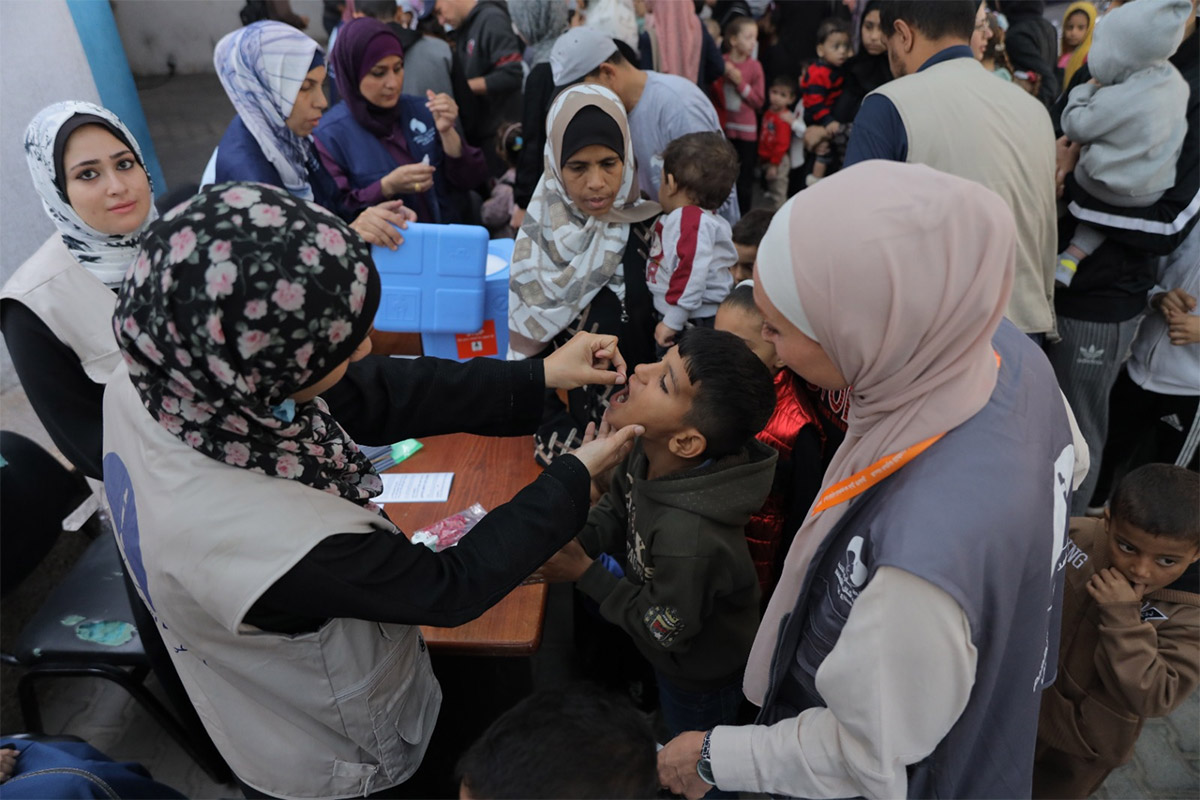
6 November 2024 – The second round of the polio vaccination campaign in the Gaza Strip was completed yesterday, with an overall 556 774 children under the age of 10 being vaccinated with a second dose of polio vaccine, and 448 425 children between 2- to 10-years-old receiving vitamin A, following the three phases conducted in the last weeks.
Administrative data confirm around 94% of the target population of 591 714 children under the age of 10 years received a second dose of nOPV2 across the Gaza Strip, which is a remarkable achievement given the extremely difficult circumstances the campaign was executed under. The campaign achieved 103% and 91% coverage in central and southern Gaza, respectively. However, in northern Gaza, where the campaign was compromised due to lack of access, approximately 88% coverage was achieved according to preliminary data. An estimated 7000-10 000 children in inaccessible areas like Jabalia, Beit Lahiya and Beit Hanoun remain unvaccinated and vulnerable to the poliovirus. This also increases the risk of further spread of poliovirus in the Gaza Strip and neighbouring countries.
The end of this second round concludes the polio vaccination campaign launched in September 2024. This round also took place in three phases across central, south and northern Gaza under area-specific humanitarian pauses. While the first two phases proceeded as planned, the third phase in northern Gaza had to be temporarily postponed on 23 October because of intense bombardments, mass displacements, lack of assured humanitarian pauses and access.
After careful assessment of the situation by the technical committee, comprising the Palestinian Ministry of Health, World Health Organization (WHO), United Nations Children’s Fund (UNICEF), and the United Nations Relief and Works Agency for Palestine Refugees (UNRWA), the campaign resumed on 2 November. However, the area under the assured humanitarian pauses comprising the campaign was substantially reduced, compared to the first round, as the access was limited to Gaza City. Due to hostilities, more than 150 000 people were forced to evacuate from North Gaza to Gaza City.
Despite these challenges, and thanks to the tremendous dedication, engagement and courage of parents, children, communities and health workers, the phase in northern Gaza was completed.
At least two doses and a minimum of 90% vaccination coverage are needed in each community to stop circulation of the polio strain affecting Gaza. Efforts will now continue to boost immunity levels through routine immunization services offered at functional health facilities and to strengthen disease surveillance to rapidly detect any further poliovirus transmission (either in affected children or in environmental samples). The evolving epidemiology will determine if further outbreak response may be necessary.
To fully implement surveillance and routine immunization services, not just for polio but for all vaccine-preventable diseases, WHO and UNICEF continue to call for a ceasefire. Further, apart from the attack on the primary healthcare centre, the campaign underscores what can be achieved with humanitarian pauses. These actions must be systematically applied beyond the polio emergency response efforts to other health and humanitarian interventions to respond to dire needs.
